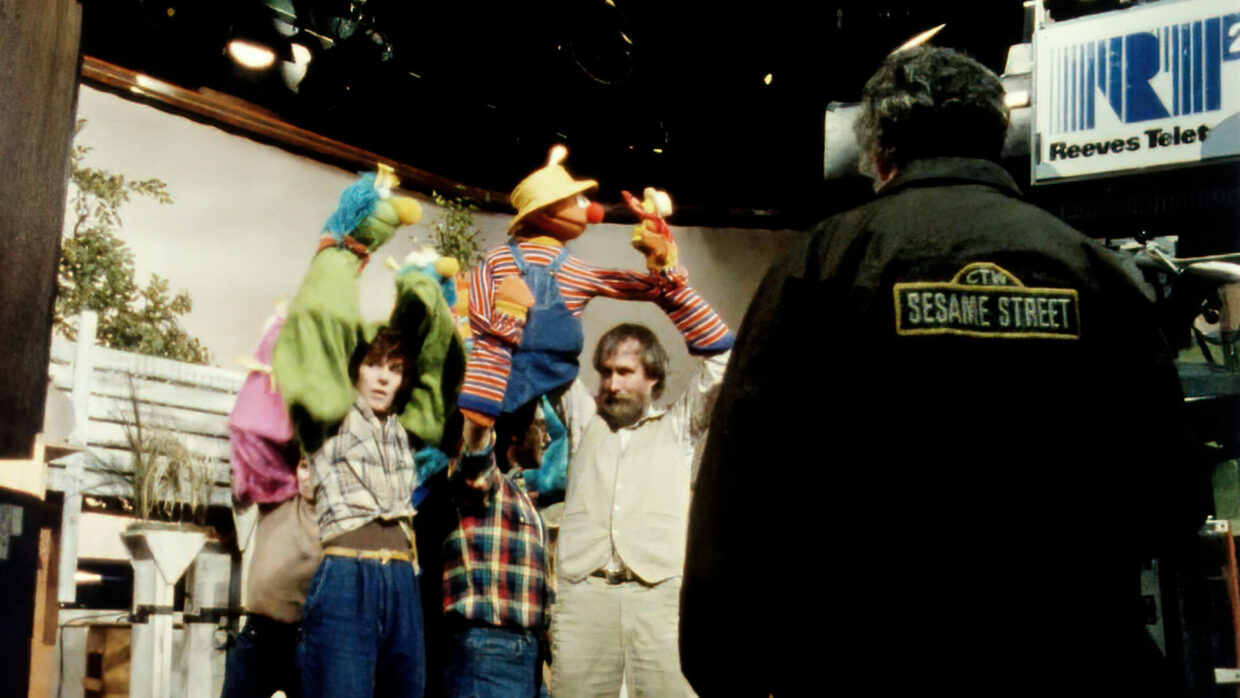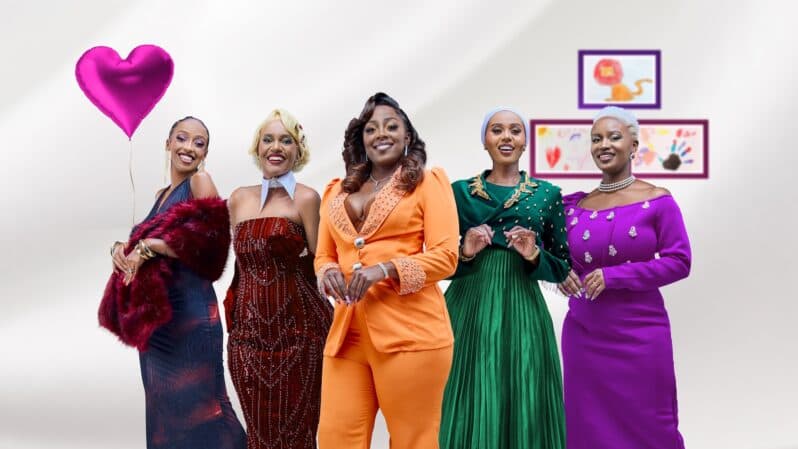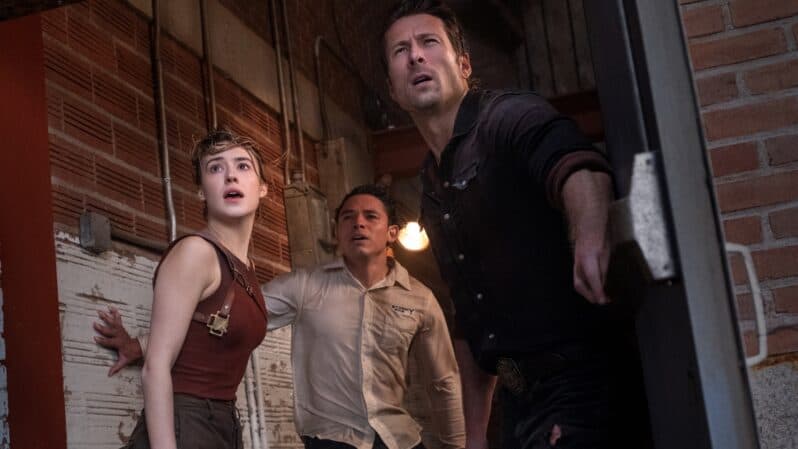
17 June 2022
Street Gang documentary: how Sesame Street sparked a revolution
Nominated for a Critics Choice Documentary Award for Best Archival Documentary, Street Gang: How We Got To Sesame Street is now streaming first on Showmax in Africa.
Street Gang has a 95% critics’ rating on Rotten Tomatoes, where the critics’ consensus says, “Like the show whose groundbreaking creation it commemorates, Street Gang: How We Got to Sesame Street is as enlightening as it is purely entertaining.”
Adapted from Michael Davis’ bestseller Street Gang: The Complete History of Sesame Street, and directed by multi-award-winning director Marilyn Agrelo (Mad Hot Ballroom), Street Gang includes the iconic furry characters and the songs multiple generations have come to know by heart, as well as never-before-seen archive footage and interviews with the original gang of visionary creators who set out to change the world. Look out for appearances from Muhammad Ali, James Earl Jones, Reverend Jesse Jackson and more.
Sesame Street is the most widely viewed children’s show in the world, with a record 214 Emmy Awards, 11 Grammy Awards, three Peabody Awards, and two stars on the Hollywood Walk of Fame (for iconic Muppet Big Bird, and legendary puppeteer Jim Henson).
Now into its fifth decade, Sesame Street has been viewed by 150 million children, with more than 150 versions in 70 different languages worldwide, including in South Africa, where Takalani Sesame’s world-first HIV+ character, Kami, was appointed a worldwide UNICEF Champion for Children in 2003.
According to Street Gang, Sesame Street all started with a conversation at a dinner party, where TV producer and documentary filmmaker Joan Ganz Cooney and Carnegie Foundation psychologist Lloyd Morrisett spoke about the issues that concerned them both – the gap in achievements for children in predominantly Black inner-city schools and the poor media landscape that awaited them at home, where children were generally presented with low-quality TV programming aimed at selling them products.
Cooney and Morrisett went on to co-found the Children’s Television Workshop (now called Sesame Workshop), set up to advance children’s education using TV. TV was deplored at the time by many academics and social scientists but if children were already memorising advertising jingles, what else could they learn from the medium?
Cooney recruited writer-director Jon Stone, composer and lyricist Joe Raposo, and trailblazing Muppets’ creator Jim Henson, who brought in Frank Oz – the man who would be the voice and hands behind beloved characters like Bert, Grover and Cookie Monster. They crafted the iconic and beloved world of Sesame Street along with an extraordinary team of writers, educators, psychologists, puppeteers, performers, and musicians – and a cast of adults who looked like no other group on television.
“Most important for Jon was his vision of Gordon [a human character played over the years by iconic Black actors Matt Robinson, Hal Miller and Roscoe Orman] representing a Black male father figure for their target audience, children of colour,” says Street Gang producer Trevor Crafts. “For Black kids, that representation was important, and for everyone else, they were seeing a fully integrated neighbourhood, something they perhaps hadn’t seen before.”
Sesame Street continued to ensure other communities were represented as well, adding Spanish-speaking characters and bringing on [now Emmy Lifetime Achievement Award winner] Sonia Manzano and Emilio Delgado, who would both stay with the show until the mid 2010s.
“It was all a bold, intentional choice,” adds Street Gang producer Ellen Scherer Crafts. “The norm of the time would not have been a Black couple, Gordon and Susan Robinson, being the main family on a show. That was revolutionary.”
“They normalised a multicultural world on television, without ever speaking about it,” adds Agrelo. “Not only did all types of people hang out together, but they lived in the same building and on the same street. It was completely normal on the show, and that was the beauty of it. For a kid to see Maria or Gordon or any of those characters and that amazing cast on TV was huge.”
As Sesame Street composer, lyricist, and writer Christopher Cerf puts it in the documentary, “We felt we could demonstrate things very subtly. There was the cognitive stuff, numbers, letters, all of those things, but equally important, maybe even more important, was the fact that Sesame Street was a neighbourhood, where people of all races, kids, adults, and monsters, live together.”
Today, entertaining and educational children’s TV programmes have become so much a part of our lives that it’s hard to believe they didn’t exist before Sesame Street first aired in 1969. US Weekly calls Street Gang “a warm hug of a documentary” but it’s also the story of a revolution that changed TV forever.
As Variety says, “It’s hard to ask for much more than a doc that captures creatives thoughtfully sneaking the civil revolution as well as basic education into children’s TV… and includes a Muppets blooper nreel.”
Showmax is also home to Sesame Street S47-50, S6 of local version Takalani Sesame, specials like When You Wish Upon A Pickle and The Magical Wand Chase, and spin offs like Elmo the Musical and Elmo’s Not-Too-Late Show.
Original African stories by local talent

Vaal Riviera
Vaal Riviera follows four Afrikaans families living in the heart of Vaal River society, where family, business, car racing and legacy all come into play. Stream from 22 August, with new episodes on Tuesdays.

The ABC Killer
The ABC Killer is a twisty true-crime documentary series about serial killer Moses Sithole. Stream now on Showmax.

What if we believed the best can come from here?
Let’s rewrite the rules of what it means to be local.

Untied S1
Untied explores the deeply personal and often complex experience of divorce, told through the voices of women who have lived it. Stream now, with new episodes every Tuesday.

Reckless S1
Reckless follows a pair of young brothers who find themselves at a crossroads when a tragic accident changes their lives forever. Stream now, with new episodes every Monday and Tuesday.

The Mommy Club NBO
The Mommy Club NBO is the fifth instalment of the record-breaking Mommy Club franchise. Stream now, with new episodes every Friday.

Empini S1-2
Empini is a high-stakes, action-packed drama set in the ruthless, corrupt world of private security. Season 2 is now streaming, with new episodes every Tuesday.

Youngins S1-2
Stream Tshedza Pictures’s first teen drama, Showmax Original Youngins. S1 and S2 are ready to binge.
The Mommy Club NBO now streaming
The Chocolate Empire, now streaming
The best movies to stream

Here, and 15 more great movies to cry about
Whether you’re looking to shed happy tears or shed part of your soul, we have movies centred on love in all its forms to help you, starting with Tom Hanks and Robin Wright’s Here.

The best kids’ shows and movies to stream during school holidays
Showmax has loads of fun to look forward to during school holidays in June/July 2025, including blockbuster movies for the whole family.

Elphaba and Glinda’s Wicked little guide
Find out what Cynthia Erivo and Ariana Grande have to say about Wicked, pick up 10 magical behind-the-scenes facts, and explore 7 more schools of witchcraft and wizardry.

Twisters and 5 other man-versus-nature nail biters
Tornado alert! A category F5 spin on the blockbuster 1996 movie Twister has just touched ground to sweep us up in the terrifying power of nature. Find out about how it was made, and what to watch next.
